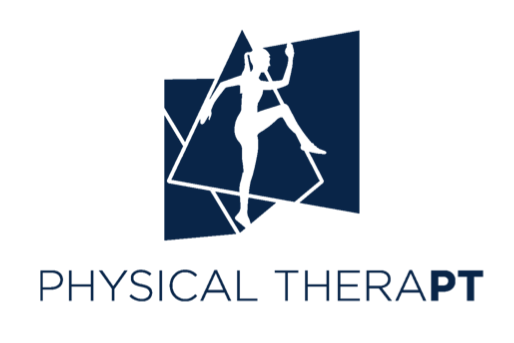If you've ever pulled a muscle, twisted your knee, or found yourself dealing with persistent aches and pains, you might have wondered: Should I go see a massage therapist or book an appointment with a physical therapist?
It’s a common question—and a good one. While both massage and physical therapy (PT) are both key for treating pain and promoting recovery, they also serve different purposes and are often most effective when used together.
Let’s explore how each one works, when to choose one over the other, and why the smartest choice might be both.
Massage Therapy: A First Line of Care
Massage therapy is often a great place to start after an injury or when you're experiencing pain, tension, or swelling. Think of it as the “first responder” for soft tissue issues—like muscle strains, tension headaches, or post-exercise soreness.
Massage therapy works by:
Reducing pain and muscle guarding through stimulation of pressure receptors and pain-modulating pathways (Moraska et al., 2021).
Decreasing swelling by improving lymphatic flow and local circulation.
Increasing blood flow to promote tissue healing and deliver nutrients to damaged areas.
Improving tissue quality, including flexibility and pliability of muscles and fascia.
This makes massage especially useful in the acute phase of healing—when inflammation is high, movement is painful, and the goal is simply to help the body settle and start repairing itself.
In many ways, massage prepares the body for what comes next: more active rehabilitation.
Massage also activates the parasympathetic nervous system, promoting relaxation and reducing the body's stress response—an often-overlooked but critical part of healing (Field, 2014). This calming effect can make it easier for patients to move, breathe, and rest, all of which are essential for recovery.
Physical Therapy: Building Long-Term Resilience
While massage is excellent for reducing symptoms, physical therapy focuses on correcting the underlying root causes of pain and dysfunction. Working with a PT becomes especially important when you’re ready to restore movement, rebuild strength, and prevent the problem from coming back.
Physical therapists are trained to:
Perform functional and sport-specific movement analysis to identify dysfunctions or imbalances.
Restore mobility and function through manual therapy to optimize biomechanics and movement.
Strengthen weak or inhibited muscles that may be contributing to pain or poor alignment and limited function.
Improve proprioception, which is your body's awareness of where it is in space—a crucial skill after injury or surgery (Han et al., 2016).
Develop and implement customized exercise plans to retrain the body and improve athletic capacity.
While physical therapists utilize manual therapy techniques and modalities to treat swelling and pain, their primary goal is long-term functional recovery and return to sport. That means helping you move better—not just feel better.
PT helps you build the strength and coordination to stay healthy, not just get healthy.
For example, if you’ve sprained your ankle, massage may help with the initial swelling and stiffness. But PT will help you restore your balance, retrain your gait, and strengthen your ankle to reduce the chance of reinjury.
Better Together: How Massage and PT Complement Each Other
Rather than choosing between massage and physical therapy, the real secret is knowing how they work in tandem.
Massage can:
Relax tight muscles before a PT session, allowing for better movement.
Help reduce soreness and inflammation after exercise or manual therapy.
Improve tissue extensibility, making stretching and strengthening more effective.
Physical therapy can:
Address the biomechanical issues causing pain or tightness in the first place.
Reinforce the gains made through massage with strengthening and motor control exercises.
Guide patients through functional movements to improve long-term outcomes.
Research supports this complementary approach. A 2016 study found that combining manual therapy (including massage techniques) with exercise led to better outcomes for low back pain compared to either intervention alone (Wegner et al., 2013). In other words, you get more value from both when they’re used together.
Final Thoughts: Two Tools, One Goal—Your Recovery
When you're in pain or recovering from an injury, it’s easy to look for one solution. But healing is rarely a straight line—and no single approach has all the answers.
Massage therapy and physical therapy each bring unique strengths to the table. Massage helps soothe the body, reduce pain, and restore tissue health. Physical therapy helps correct movement, build strength, and prevent future problems.
Used together, they offer a more complete path to healing. So if you’re wondering whether to book that massage or start PT, the answer might be: both—at the right time, in the right order, and with the right goals.
References
Field, T. (2014). Massage therapy research review. Complementary Therapies in Clinical Practice, 20(4), 224–229.
Han, J., Waddington, G., Adams, R., Anson, J., & Liu, Y. (2016). Assessing proprioception: A critical review of methods. Journal of Sport and Health Science, 5(1), 80–90.
Moraska, A. F., Chandler, C., Edmiston-Schaetzel, A., Franklin, G., Calenda, E. L., & Rice, K. (2021). Massage therapy for pain and function in patients with chronic low back pain: A systematic review and meta-analysis. Pain Medicine, 22(4), 842–854.
Wegner, A., Widyahening, I. S., van Tulder, M. W., Blomberg, S., de Vet, H. C. W., & Brønfort, G. (2013). Traction for low-back pain with or without sciatica. Cochrane Database of Systematic Reviews, (8).


